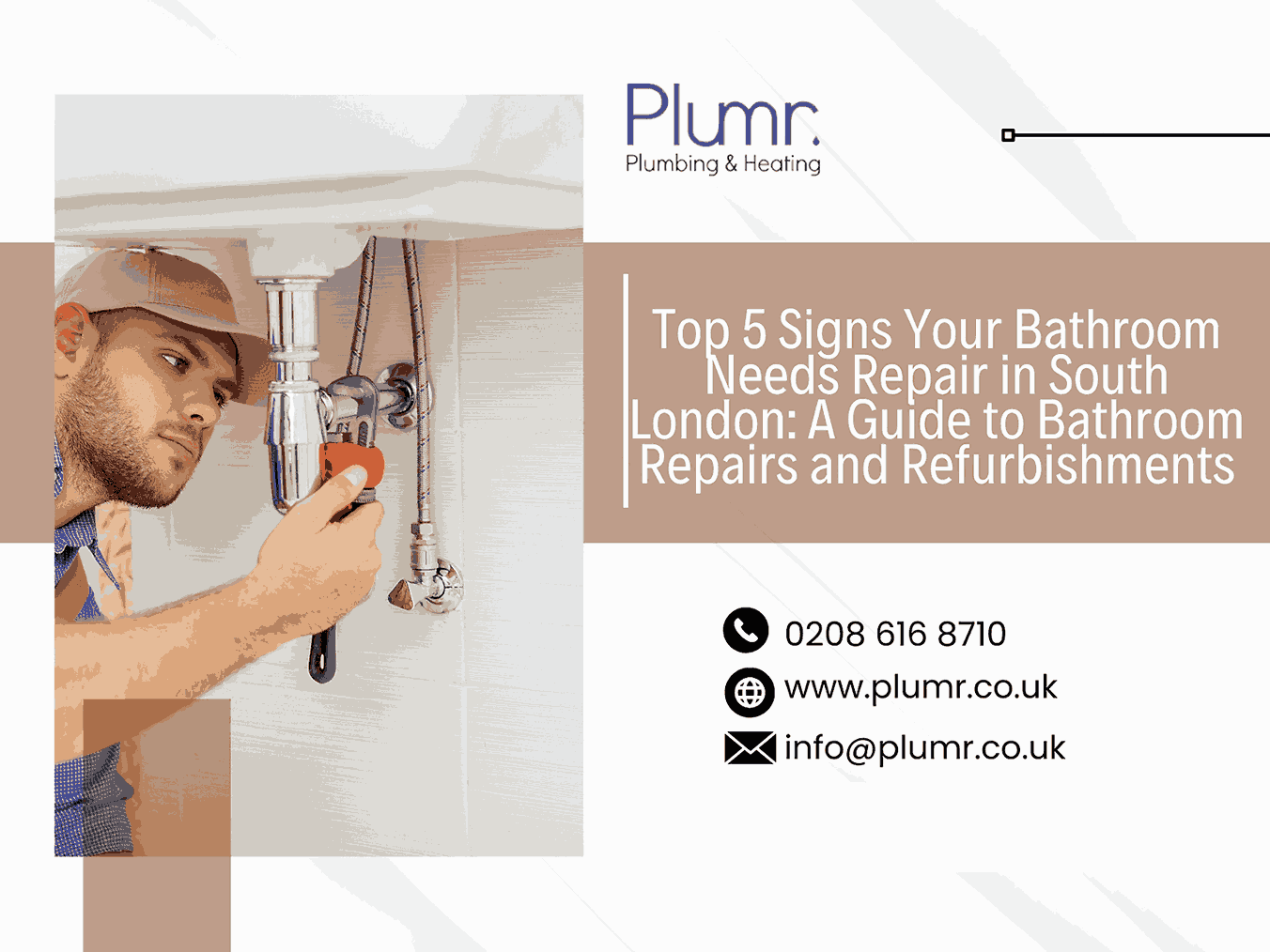Introduction
A well-maintained bathroom is crucial for your home’s overall comfort and functionality. Residents in South London face specific challenges related to bathroom maintenance, making it essential to identify signs that repairs or refurbishments may be needed sooner rather than later.
Understanding the Importance of Bathroom Maintenance
Bathrooms play a vital role in our daily lives, and paying attention to their upkeep can lead to various issues. This article will guide you through the top 5 signs that your bathroom repairs in South London may need repairs or even a complete refurbishment.
Top 5 Signs Your Bathroom Needs Repair
1. Leaks and Water Damage
One of the primary indicators of bathroom issues is the presence of leaks and water damage. Stains on walls and ceilings can signal plumbing problems that require immediate attention. Deterioration of grout and caulk can also be signs of water infiltration, demanding prompt repairs.
2. Mold and Mildew Growth
The humid climate in South London makes bathrooms susceptible to mould and mildew growth. Unpleasant odours and discolouration on tiles and grout indicate that your bathroom may need professional attention to address mould-related issues.
3. Plumbing Issues
Slow drainage, unusual sounds, or visible leaks are signs of plumbing issues that should not be ignored. DIY fixes might help minor cases, but professional assistance is often necessary for more complex plumbing problems.
4. Damaged or Peeling Paint
Bubbling or cracking paint in the bathroom can result from moisture-related issues. Identifying the root cause is crucial to prevent further damage. It may involve repainting or, in severe cases, addressing underlying structural problems.
5. Outdated Fixtures and Appliances
Inefficient fixtures not only contribute to higher utility bills but can also impact your bathroom’s aesthetic and functional aspects. Consider updating fixtures regularly to ensure optimal performance and keep up with modern design trends.
DIY Tips for Minor Bathroom Repairs
For homeowners looking to address minor issues themselves, here are some DIY tips:
-
Fixing small leaks with waterproof sealant.
-
Using mold-resistant paint to prevent mold growth.
-
Unclogging drains with a mixture of baking soda and vinegar.
-
Repainting walls with moisture-resistant paint.
-
Upgrading fixtures for improved energy efficiency.
Conclusion
In conclusion, maintaining a functional and aesthetically pleasing bathroom is crucial for the overall well-being of your home, especially in the unique climate of South London. By being vigilant and identifying the top 5 signs that your bathroom needs repair, you can promptly address issues, saving time and money.
Water damage, mould growth, plumbing issues, peeling paint, and outdated fixtures are vital indicators. Whether it’s a minor repair or a complete refurbishment, taking action can prevent further damage and enhance the longevity of your bathroom.
Remember, proactive maintenance is the key to a healthy and efficient bathroom. Regular inspections, prompt repairs, and keeping up with modern trends in fixtures and designs contribute to a comfortable living space.
Professional Bathroom Fitting London stands ready to provide reliable and efficient services for those in South London seeking professional assistance. Our experienced team of London Bathroom Fitters is dedicated to enhancing your bathroom’s functionality and aesthetics.
Frequently Asked Questions (FAQs):
1. How do I identify water damage in my bathroom?
Ans: Look for visible signs such as stains on walls and ceilings, discolouration of grout, or unpleasant odours. Water damage may also manifest as peeling or bubbling paint. If you notice any of these signs, you must seek professional assistance for a thorough inspection.
2. Is mould in the bathroom dangerous?
Ans: Yes, mould in the bathroom can pose health risks, especially in a humid climate like South London. Mold can cause respiratory issues and allergies. If you suspect mould growth, it’s advisable to consult with professionals who specialize in mould remediation to ensure a safe and healthy environment.
3. Can I fix plumbing issues on my own?
Ans: DIY solutions can often address minor plumbing issues, such as a clogged drain. However, for more complex plumbing problems like leaks or unusual sounds, it’s recommended to seek the expertise of a professional plumber. Attempting significant repairs without the proper knowledge can lead to further complications.
4. What are the common causes of peeling paint in bathrooms?
Ans: Peeling paint in bathrooms is often caused by moisture-related issues. High humidity levels, leaks, or inadequate ventilation can deteriorate paint. Identifying and addressing the root cause of moisture is crucial before repainting to ensure a long-lasting solution.
5. How often should bathroom fixtures be updated?
Ans: Bathroom fixtures, including faucets, showerheads, and toilets, should be considered for an update every 10-15 years. However, updating fixtures sooner may be beneficial if you notice decreased efficiency, increased water bills, or want to keep up with modern design trends.
6. Can I undertake minor bathroom repairs myself?
Ans: Yes, for minor issues like small leaks, unclogging drains, or repainting, you can attempt DIY solutions. Ensure you have the necessary tools and follow safety precautions. However, if you’re uncertain or the issue persists, it’s advisable to consult with professionals to avoid potential complications.
7. How can I prevent future bathroom issues?
Ans: Regular maintenance is critical to preventing future problems. Look for signs of water damage, promptly address leaks, clean and ventilate the bathroom regularly, and consider periodic professional inspections to catch potential issues early.
8. Are there energy-efficient options for bathroom fixtures?
Ans: Yes, modern bathroom fixtures often come with energy-efficient features. Upgrading fixtures with water-saving technology can reduce water consumption and contribute to energy savings, benefiting both the environment and your utility bills.
9. What should I look for in a professional bathroom fitter in South London?
Ans: When hiring a professional bathroom fitter, consider their experience, reviews from previous clients, and relevant certifications. Ensure they offer comprehensive services, including repairs, refurbishments, and installations. Seeking recommendations from friends or neighbours can also help find a reliable professional.
10. How can I contact Professional Bathroom Fitting London for assistance?
Ans: For efficient and reliable bathroom repairs or refurbishments in South London, contact Professional Bathroom Fitting London at [insert contact details]. Our experienced team of London Bathroom Fitters is ready to enhance the comfort and aesthetics of your bathroom.



